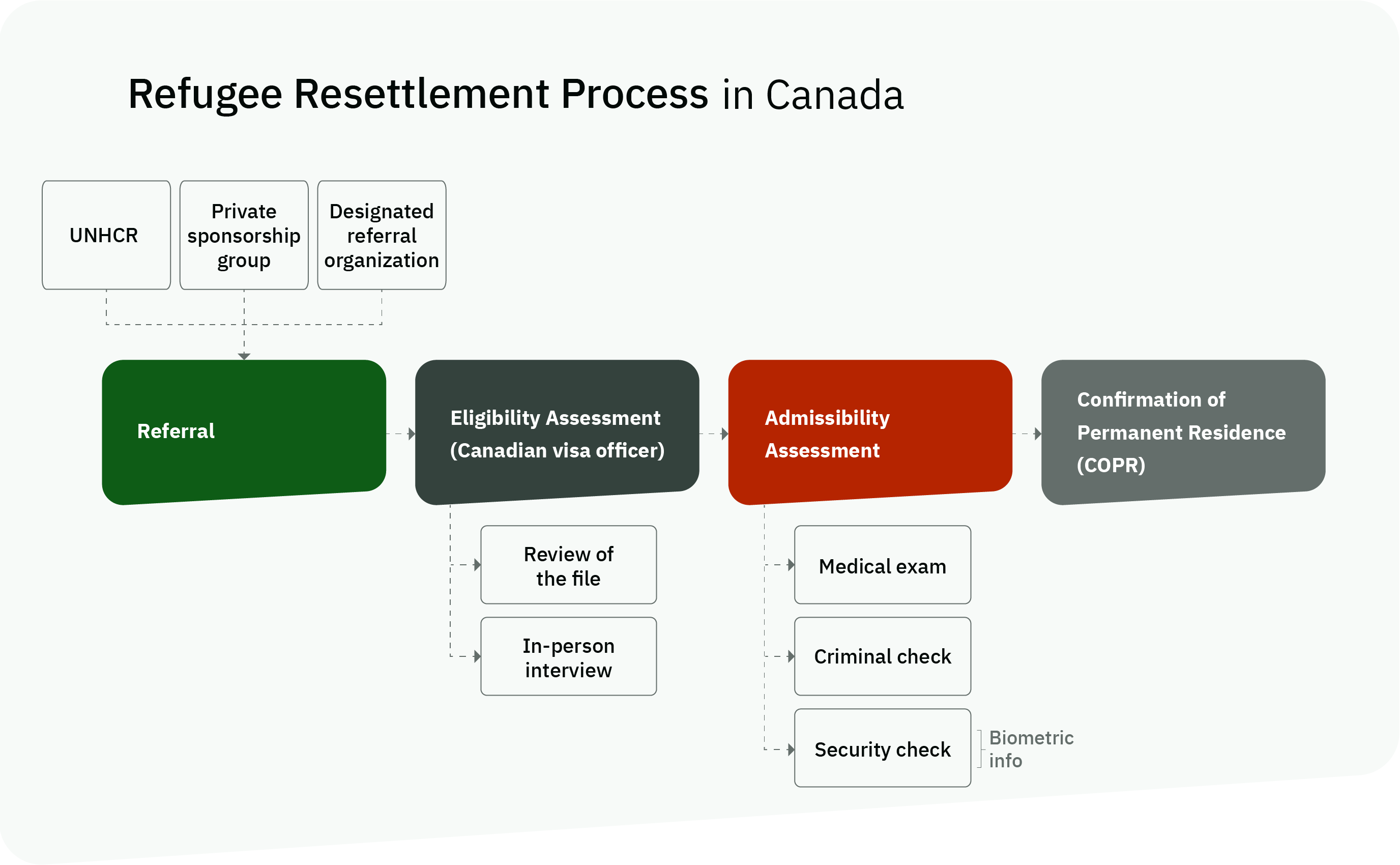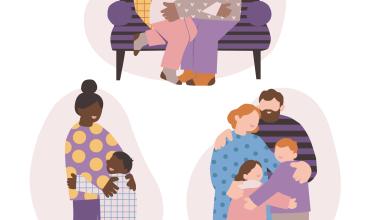It is important to keep in mind that a person cannot apply directly to Canada for resettlement as a refugee. They first need to be referred. Following this referral, they will then complete eligibility and admissibility assessments before final decisions are made.
First Step : Referral
People must be referred, either by the United Nations Refugee Agency (UNHCR), a designated referral organization, or a private sponsorship group. To be referred for resettlement, refugees need to be outside their country of nationality (or country of former habitual residence if they have no country of nationality). An applicant must meet the criteria of the 1951 UN Convention relating to the Status of Refugees or meet the criteria of the Humanitarian-protected Persons Abroad Class (HPC). According to the Guide for Convention Refugees and Humanitarian-Protected Persons Abroad, “a Migration Officer must be satisfied that there is no reasonable prospect, within a reasonable period of time, for the refugee applicant to obtain another durable solution.”
UNHCR Referral
UNHCR supports the resettlement of individuals who have been recognized as refugees under UNHCR’s mandate, for whom resettlement is the most appropriate durable solution, and who fall under UNHCR’s Resettlement Submission Categories: Legal and/or Physical Protection Needs, Survivors of Torture and/or Violence, Medical Needs, Women and Girls at Risk, Family Reunification, Children and Adolescents at Risk, and Lack of Foreseeable Alternative Durable Solutions. Only the most vulnerable refugees are referred by UNHCR for resettlement.
When a case is referred for possible resettlement, UNHCR resettlement staff first verifies the individual’s registration and refugee status before setting up an appointment for a resettlement interview. The resettlement interview will include all family members listed in the case, and an interpreter if one is needed.
Private Sponsorship Referral
There are two ways that a private sponsoring group can identify a refugee they wish to sponsor:
- Sponsor-referred: the sponsoring group submits the name of an individual refugee or refugee family they hope to sponsor. The group might have received the name of the person from an overseas contact, a friend, a community member, a relative of a group member, or elsewhere. The sponsoring group, whether they fall under the category of Sponsorship Agreement Holders (SAHs)/Constituent Groups(CGs), Groups of Five (G5) or Community Sponsors (CSs) (for more information, visit Groups that can sponsor refugees), then submits the sponsorship application on behalf of the sponsor-referred refugee(s) to the Resettlement Operations Centre in Ottawa (ROC-O). G5 and CSs must provide a refugee status document with the sponsorship application.
- Blended visa office-referred/visa office-referred: ROC-O creates an inventory of selected cases from all UNHCR referrals. Immigration, Refugees and Citizenship Canada (IRCC) then matches a private sponsoring group (SAH, G5 or CS) with a refugee from this inventory under the Blended Visa Office-Referred (BVOR) or Visa Office-Referred (VOR) programs.
Second Step : Eligibility Assessment
Once the referral is done, a Canadian visa officer is tasked with conducting a review of the refugee’s documentation followed by an in-person interview. The officer has to make sure the identified refugee(s) meet the eligibility criteria for entry to Canada. This is a crucial step in the refugee sponsorship process, because the interview is used to validate the applicant’s information before proceeding to the next step in the selection process. The interview is usually conducted in person in the host country.
Third Step : Admissibility Assessment
If the refugee is approved by the visa officer, they must go through another series of security checks conducted by the Canadian Security Intelligence Service (CSIS). This step is called the admissibility screening and comprises :
- Medical screening: full immigration medical exam, including screening for contagious diseases (tuberculosis, also known as TB).
- Criminal screening
- Security screening
Security screenings and criminal background checks are conducted to ensure that the refugee does not pose a threat to the safety or security of Canadians.
As part of the security screening process, applicants between the ages of 14 and 79 (inclusive) are required to provide biographical and biometric information, including fingerprints and digital photos.
The Canadian visa officer then proceeds to double check the security and medical screening documents.
Fourth Step : Final decision on application
If CSIS recommends that the refugee be admitted and the Canadian visa officer agrees, the refugee is granted Permanent Resident (PR) status in Canada. IRCC will issue a permanent resident visa and a Confirmation of Permanent Residence (COPR).
If the application is refused, the decision may not be appealed, but the refugee may complete a new application. In some cases, it is also possible to seek a judicial review by the Federal Court of Canada.
Once the refugee arrives in Canada, the Canadian Borders Services Agency (CBSA) processes their admission. They reconfirm that everything is in order, including a final check of identity and cross checking biometrics.


